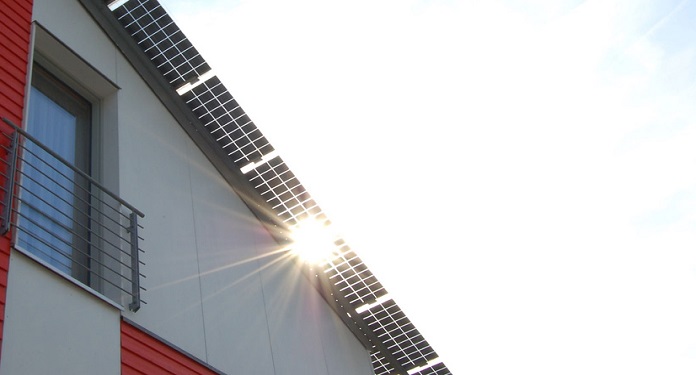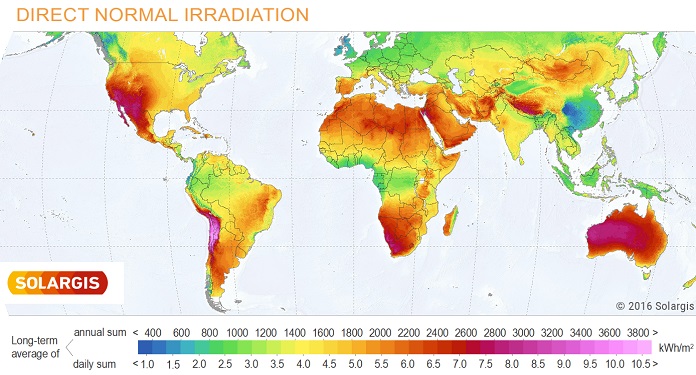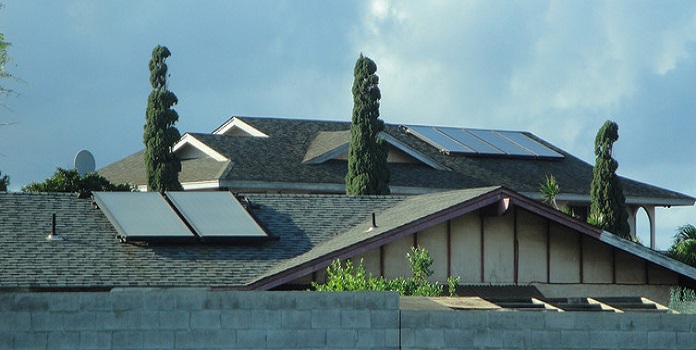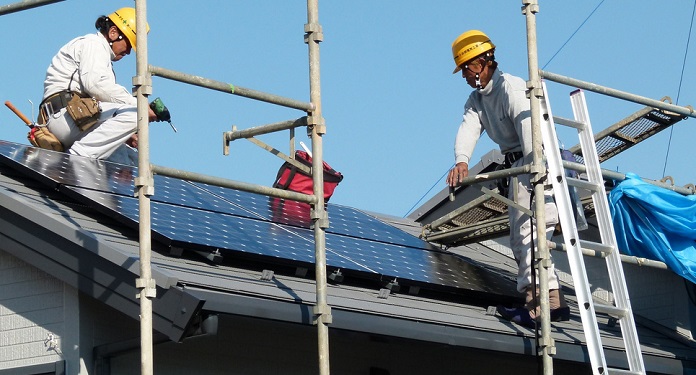Sunlight vs Intensity: Calculating Sun Hours Per Day by Zip Code

How to determine if you get enough sun to make solar panels worth it
Do you live in a sunny state and think that solar panels may be a good investment to cut down on your energy bills and improve the value of your home? Or maybe you live in a less sunny state and believe solar panels would be suicide from an investment perspective. In reality, the decision to go solar is more complicated than just calculating sun hours per day by zip code.
Let’s figure out what is important to know about sunlight before you decide to go solar.
Of the many environmental, financial, legal, and personal variables that go into the decision to go renewable, one very important component is your area’s solar radiation – or how strong the sunlight is in your area – known as solar insolation. This measurement is one of many relevant factors that go towards making a sound investment in residential solar power.
Are sun hours per day by zip code really what we’re after? 
If we want to know how many hours in the day offer sunlight in our area, we can look at standard sunrise and sunset times throughout the year and count the hours in between. The Astronomical Applications Department at the US Navy offers a great tool for this, with search options for domestic and global locations.
For a more visual understanding, try SunCalc, which offers a map of your area with a graph of the sun’s position at sunrise, sunset, and the current (or a specified) time. You can even see how high the sun is on the horizon at any given location and time. Cool stuff!
Both of these sites can be searched by city, and the latter also operates by zip — thus enabling you to calculate sun hours per day by zip code.
Solar insolation: why it’s important when considering rooftop solar
When it comes to residential solar power, an equally important measurement is solar insolation. What does that even mean, and why does it matter so much? When planning to invest in a rooftop solar system, it’s important to know just how big your system needs to be (the number of panels on your roof) in order to power your home. This is based on many things, one being the average amount of sunlight in your area. That seems simple enough.
Unfortunately, not all sunlight is created equally. This is where the term “sun insolation” comes in. The first thing to point out is that insolation is not insulation, that stuff in our walls that traps heat in our houses.
Solar insolation measures how intense the sunlight is at a given place (your zip code, for example) over a given time (typically 24 hours), measured in kWh per square meter. Higher solar insolation means your solar installation can produce more energy. You can easily see why it’s as important as sun hours for solar homes.
Take a cloudy morning in January for example. January has some of the least hours of sunlight and some of the shortest days out of the year. In the afternoon, the clouds could part and it might be sunny for a few hours. Can we assume that in those few hours we are generating 100 percent of our panels’ capacity? Nope.
The angle of the sun (and the angle of your panels as well) impacts just how much solar power your rooftop system can soak up. Let’s use an analogy to explain: imagine that you shined a flashlight directly on a soccer ball. The amount of light hitting the front of the ball would be a lot stronger than that at the top or the bottom.
It’s the same idea here. The sun shines directly on the equator, but during the winter months us North Americans are farther away from that direct sunlight, so solar insolation is lower.
Beyond latitude and time of year, other factors that affect solar insolation include:
- Time of day, as solar insolation is higher around noon
- The placement of the sun in the sky
- Environmental conditions like smog, smoke, and clouds
- Even the distance between the earth and the sun!
Calculating solar insolation: no math necessary
 The solar insolation in your area represents the total amount of optimum or ‘peak’ sunlight you receive within a 24 hour period.
The solar insolation in your area represents the total amount of optimum or ‘peak’ sunlight you receive within a 24 hour period.
So if I live in Seattle, Washington, where it can be fairly cloudy, I may get 30 minutes here and there of strong, maximum-strength sunlight hitting my panels at an angle where they are generating power at peak voltage. Whether this happens for several hours straight, or intermittently throughout the day, my installation’s total maximum voltage hours are those peak sunlight hours added together.
Your solar panels will produce the most when the sun is directly above them at a 90 degree angle. This is not necessarily when the sun is highest in the sky, as both your roof and panels are likely placed at angles.
This creates the shortest distance between the sun and your panels, giving you the maximum voltage that best powers your home. As the sun continues to move away from your panels, that solar energy is lost through reflection.
Who uses solar insolation?
The measurement and monitoring of solar insolation is definitely not common knowledge. It’s used mostly by installation experts, along with a host of other information and software tools, to find the sweet spot where your panels can take the most advantage of the sun’s rays. It allows installers to choose the appropriate number of panels and location for your rooftop system.
Installers typically use average measurements for an entire of sunlight in your area to determine the angle and number of solar panels to place on your roof. This way, with your net metering agreement, you’ll be able to benefit from your solar installation year around.
When solar insolation is low in certain areas of the world (i.e. far-north Alaska), it will take many more panels to get the same amount of energy as we could get from just a handful of panels with more consistent sun exposure (i.e. Arizona or southern California). This makes your location an important factor. When installers use this information, they can give you an accurate annual estimate of energy output for your solar system.
If you’re interested in getting a general idea of the solar insolation output in your area, NASA offers a nifty tool online. All you need to do is find your longitude and latitude outputs and enter them here. NASA’s Atmospheric Science Data Center will then provide you a series of parameters.
To find your solar insolation, simply click on “Insolation on horizontal surface (Average min, max)” which is located in the second parameter, “Parameters for Sizing and Pointing of Solar Panels and for Solar Thermal Applications”. Voila! You will be able to to see your area’s monthly average insolation as well as the annual, based on more than 20 years of collected data.
Low solar insolation ≠ no solar panels
 Don’t forget that having low solar insolation does not mean that rooftop solar panels are a poor match for you, as it is just one in many factors that go into calculating just how much you can benefit from installing solar.
Don’t forget that having low solar insolation does not mean that rooftop solar panels are a poor match for you, as it is just one in many factors that go into calculating just how much you can benefit from installing solar.
For example, northeastern states in America tend to get less peak sunlight hours than in the southwest, but the northeast’s higher electricity prices and state incentive programs for solar panels actually make a rooftop system a more economical option than in the southeast.
Surprisingly, generating your home with solar power is not just about the sun, it is about a lot more. So take your new understanding of solar insolation as one slice of the pie when choosing whether to take the plunge and go solar.
Which one do you think gives a better estimation of solar energy creation: solar insolation or sun hours per zip code? Let us know in the comments!
Image Credits under CC License via Flickr – 1, 2, 3, 5, Pixabay – 4, and map – Solargis



